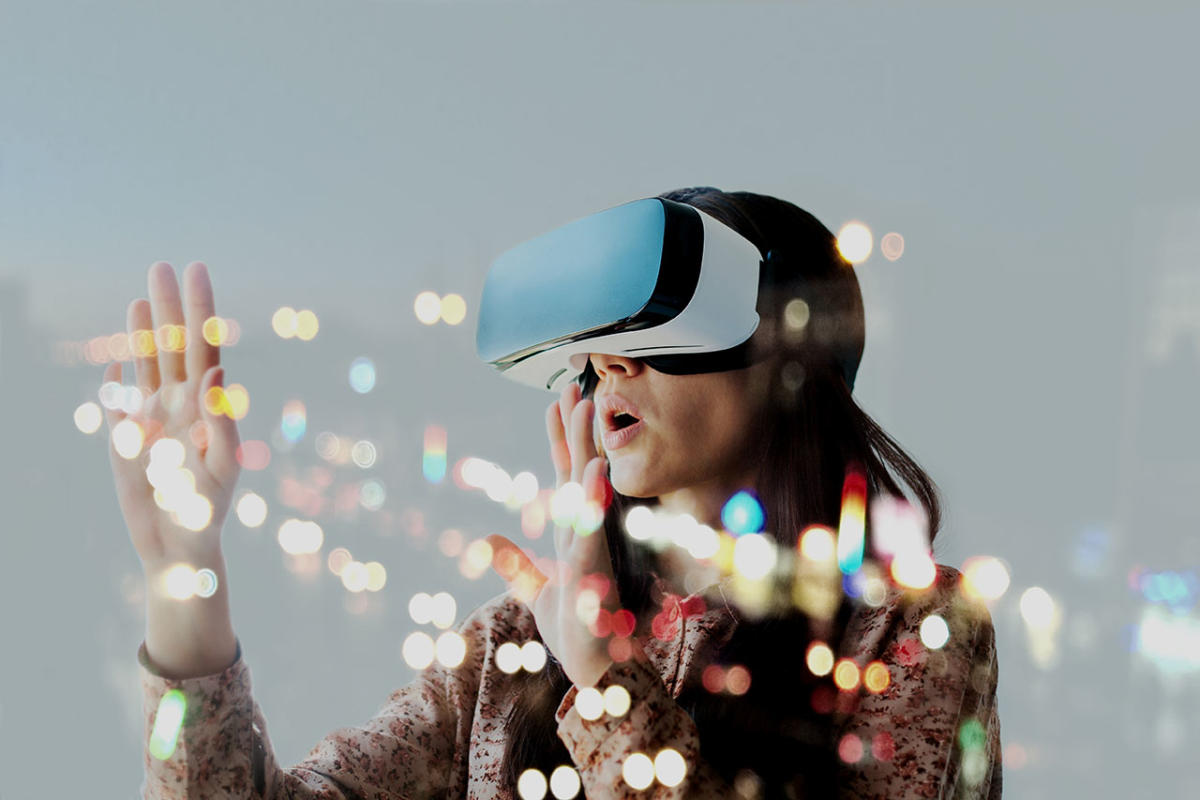Interested in learning about how the human heart really works? Just put on a headset, open an app on your phone and find yourself inside the human heart, able to feel the throbbing, the rise and fall of heart beats and experience the functions performed by the right and left ventricle in real time. Your observations and learnings will stay with you way longer than the lecture you sat through in a classroom with only a couple of tasteless line diagrams on a chalk board to tickle your imagination.
This is what they call “immersive learning”: a new approach to teaching and learning that blends the latest technology with traditional methods of education to provide a more engaging and stimulating environment for learner. In simple words, it is the transition from focusing on whether the learner is right or wrong to the very experience of learning.
Read more: Where do laid off online teachers go now that offline school is back on track?
Albert Einstein famously remarked, “Learning is experience, everything else is information.” We are living today in a fast-paced world with technology intervening in every aspect of our lives. Advanced digital tools such as AI, VR, AR, MR are bringing us down to the very bones of learning, literally and metaphorically. These technologies, used in combination, are transporting learners to the virtual world offering not just an enhanced and rich learning experience but also decentralising and democratising education. This new learning environment aims to stimulate as many of the five senses as possible to render permanent learning and does not require learners to be restrained to a physical location to learn.
Due to their immersive nature, capacity to transmit knowledge in new and engaging ways and the potential to deliver virtual experiences that can alleviate barriers due to cost and distance, AR/VR technologies are promising a whole new learning curve for the new age learners.
More than anything else, these technologies make learning fun and accessible. They allow learners to interact with the content and practise in real time to improve understanding, promote knowledge recall, strengthen retention and raise the level of involvement.
We are living with a whole generation of digital natives who live and breathe technology and use it seamlessly to enhance their experiences. Why not make this very technology that they have so far used largely for entertainment or games to ‘edutain’ them? AR/VR play a vital role in building the education metaverse which is surely being touted as the future of immersive learning by promoting collaboration, communications and content mastery with no physical barriers whatsoever.
Imagine the level of learning if we could be transported to history or remote locations in historical time that can’t be visited physically anymore. It would surely replace dozens of lectures by that one immersive learning experience in the virtual world. How about enabling learners to be inside a virtual airport and learn about the various stages of checks before your fly, or to be in a virtual courtroom arguing in front of a Judge and the opposing counsel? How powerful would it be for a learner to interact with a periodic table virtually or dismantle the parts of jet engine and reassemble them again in a safe and controlled environment virtually with a focused learning outcome esp. in cases where an actual practical session can run the risk of life and well as damage to costly equipment. These immersive experiences not only enhance learning but also strengthens skills like problem solving, critical thinking and creativity.
Immersive learning spaces also strengthen collaboration and co-creation in a virtual environment, such as construction of machine-based models or buildings in groups. Immersive technologies empower educators to create a personalised one on one experience for the learner which are nonetheless rooted in the core curriculum focused on specific learning objectives.
AR and VR is said to have the greatest impact on human perceptual organs and their potential in education and learning is yet to be fully explored. They bring the following 4 components in the learning journey of a student thus enhancing their experience:
- Self-Paced learning: In an immersive and interactive virtual space, learners can freely view any object or process in minute detail and from various different angles which is way more interesting and engaging that looking at a static image.
- Undivided Attention: a virtual environment is devoid of distractions or any external stimuli that can take attention away. This allows enhanced levels of concentration thus leading to better and faster learning.
- Deeper Involvement: real life settings, moving objects and surround sound please all the senses and create a idyllic state for the human senses to engage. This ensures effectiveness of learning and quality of knowledge acquisition,
- Safety: Learners can experience things that can otherwise involve dangerous scenarios and costly equipment to render possible
In addition, immersive technologies allow control as well as personalisation to tweek the learning environment as per the desired requirements making it the perfect place to learn seamlessly.
Read more: EdTech blues: Has the online education bubble burst or will it recover current dip in business?
For years learning has been a class room monologue delivered ‘one to many’ passing knowledge (more so information) that is passively received (or not) by the learners. Most of this was forgotten the moment the learner went to the next grade and eventually out of school. Immersive learning and teaching techniques have brought in a significant change in this one-sided love story, giving learners the ability to interact, engage, self-learn and absorb at their own pace and be able to revisit or ‘replay’ anytime from anywhere. This is nothing less than a revolution that will change the learning landscape forever.
It’s time to bring the ‘fun’ back in ‘fundamentals’ and immersive technology surely has a significant role to play.

Yuvraj Krishan Sharma
Guest contributor Yuvraj Krishan Sharma is the Co-founder and Chief Product Officer (CPO) of Edverse, an immersive, interactive, and insightful education metaverse that aims to bring together educators, learners, creators and promoters of education on a highly immersive 3D ed-scape catapulting the current day education system to the next level. Any opinions expressed in this article are strictly that of the author.











